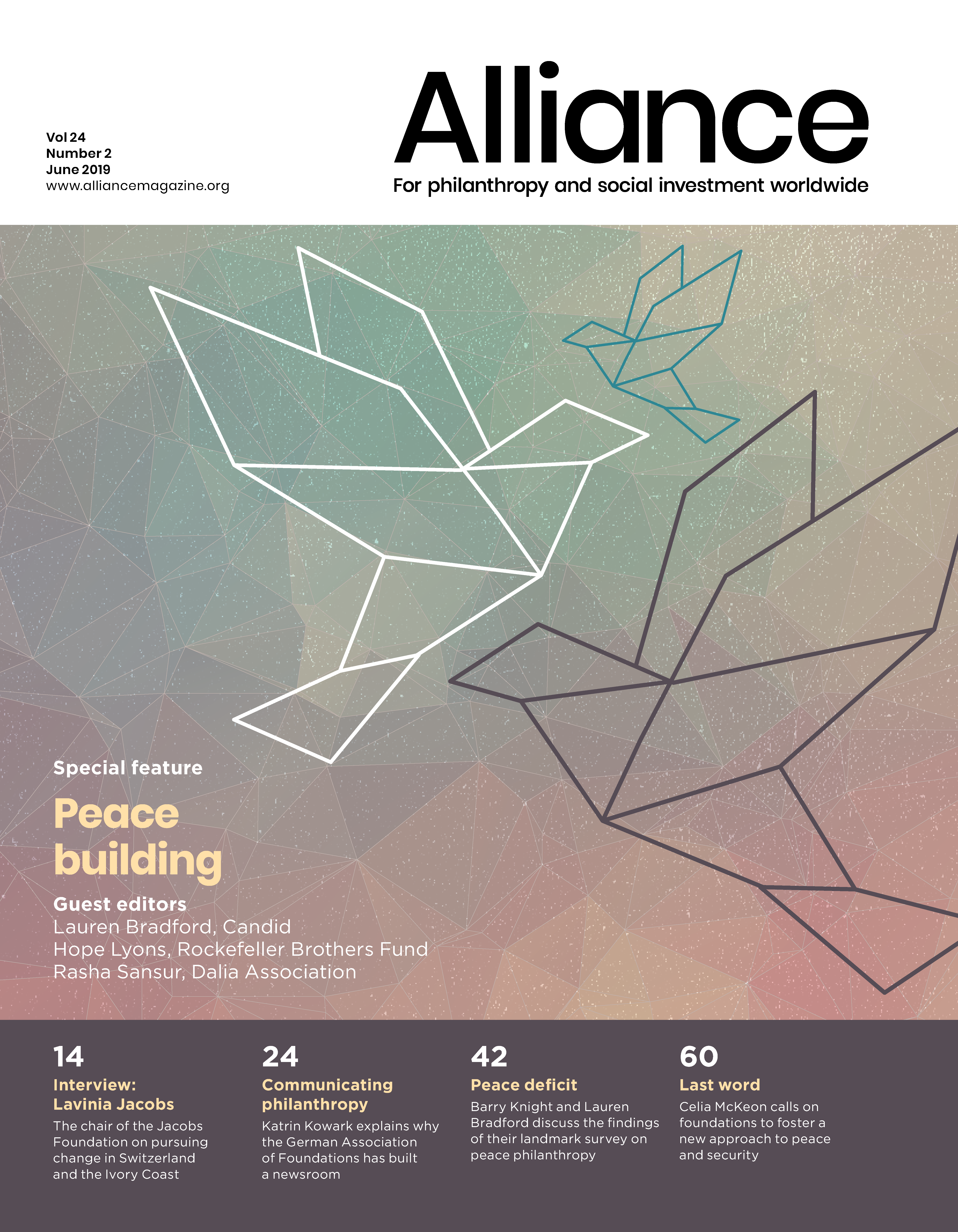If we want to use the study of philanthropy to create more generous societies, we need a more inclusive notion of the concept
The question that drives my research as the Visiting Stead Family Chair in International Philanthropy at the Lilly Family School of Philanthropy in Indianapolis is how we can create more generous societies, defined as societies where people care for each other and want to contribute to the public good, rather than take from it. Philanthropy can be a powerful instrument to enable the creation of more generous societies, but there are many issues which limit the role it plays in this process. As Stanford University academic Rob Reich shows in his work, philanthropy can just as easily lead to the creation of more unequal, rather than more generous societies.
Philanthropy is a contested concept, with different meanings and connotations, depending on the local context in which it takes place. As researchers we understand very little about how people across the world define, understand and practise ‘philanthropy’ or what motivates them to display these behaviours. We know even less about how we can best study this.
When research is overwhelmingly conducted from a small subset of countries, there is no place for different cultural perspectives on the study of a phenomenon.
In collaboration with researchers from all over the world, including colleagues and students at my two home institutions, the Lilly Family School of Philanthropy in Indianapolis and the Vrije Universiteit in Amsterdam, I focus on the development of an inclusive, global and interdisciplinary research agenda to study giving, philanthropy, pro-social behaviour and generosity. Through this, my colleagues and I hope to produce research that helps to facilitate positive contributions by philanthropy across different countries and cultures, and with that help create more generous societies.
The need for a more inclusive study of philanthropy
Both the academic literature and the empirical study of philanthropy suffer from American-Euro ‘normativeness’ – a particular view of what should constitute generosity. Let me share with you two examples of this, and why this is problematic for the global study of philanthropy.
The broader and more inclusive the definition of philanthropy we use, the more likely we are to be able to successfully urge the creation of conditions in which philanthropy – broadly understood – can flourish.
First, as a study by Ma and Konrath shows, the majority of the academic literature in our field is produced in North America and Western Europe, and consequently focuses on the dominant populations in these areas. In 2017, the Nonprofit and Voluntary Sector Quarterly, one of the key journals in the field, accepted 67 articles for publication. Out of these, 38 came from the United States and Canada, eight from the United Kingdom and ten from the rest of Western Europe, and five from Australia and New Zealand. Only three – 4.5 per cent – were submitted from other parts of the world, from Hong Kong, Korea and Brazil. When we consider the corresponding statistics for Voluntas, another key journal in the field, the numbers show a bit more diversity, but not much. Voluntas accepted 125 articles for publication in 2017. For 54 of them, the primary author’s home institution was in Western Europe, and for 35 of them, in North America. Fifteen articles originated in Asia, four each in Australia and the Middle East, two in Latin America and one each came from Africa and Russia.
When research is overwhelmingly conducted from a small subset of countries, there is no place for different cultural perspectives on the study of a phenomenon. Such research works from a very narrow definition of philanthropy, and typically focuses on formal, organised and institutional philanthropy. This is important for two reasons. First, because we do know from research that people across the world ascribe different meanings to the idea of philanthropy. Second, and even more importantly, because we develop policy recommendations based on the findings from this small subset of countries and cultures. In other words, the broader and more inclusive the definition of philanthropy we use, the more likely we are to be able to successfully urge the creation of conditions in which philanthropy – broadly understood – can flourish. In the light of the narrowness of the present definition, it is also interesting to examine Reich’s critique of philanthropy. Is that also valid outside the United States, or is it a uniquely US phenomenon, and, in particular, unique to ultra high net worth donors from the US?
Are the English-speaking nations really more generous in terms of helping, giving and volunteering, or is it simply that the questions asked and the language used in those questions resonate more with, or are better understood by, people in those countries?
The empirical study of philanthropy
My second example of normativeness relates to the empirical study of philanthropy. The largest empirical data collection of generous behaviour is the Gallup World Poll. This is a representative survey conducted in nearly 150 countries, in which people are asked whether or not they: 1) helped a stranger, or someone they didn’t know who needed help; 2) volunteered time to a charity; and 3) donated money to a charity during the past month. It covers a far larger and more diverse range of countries than any other dataset and, since 2010, the Charities Aid Foundation (CAF) has published the World Giving Index, based on the Gallup data. The CAF Index ranks countries on the percentage of their population that say they have participated in the three forms of behaviour listed above. Recently, Gallup has also published the same statistics and ranking, but in a report of its own named The World’s Most Generous Countries.
While Myanmar and Indonesia rank high on these indices, more often than not the higher ranks are dominated by English-speaking countries, such as the United States, United Kingdom, Canada, Australia and New Zealand. Are the English-speaking nations really more generous in terms of helping, giving and volunteering, or is it simply that the questions asked and the language used in those questions resonate more with, or are better understood by, people in those countries? Moreover, are these actually the right questions to ask when studying generosity?
This is just one problematic aspect of using the Gallup World Poll to rank countries according to their generosity. Another problem is that people are asked to report their behaviour in the month leading up to the survey. Not all populations are surveyed simultaneously, and sometimes the fieldwork is conducted in the month after a cultural or religious holiday such as Eid al-Fitr or Christmas, which leads to an overestimation of the generous behaviour of the population surveyed. Other issues relate to cultural and religious barriers in the reporting of generosity behaviours and the use of only one question for each type of behaviour, which has been found to result in underestimates in some populations.
If we want to empirically study generosity and philanthropy, we need to start bridging disconnected knowledge communities and to use a comparative, interdisciplinary, mixed-method and inclusive approach in our research. Only then we will be able to come to a truly global understanding of the concept and practice of, and motivations for, generosity, and consequently understand how we can help create more generous societies.
Over the next period, I will continue to work on establishing a research agenda that reflects this approach. I am excited to be presenting my ideas in one of the keynote speeches at the European Research Network on Philanthropy (ERNOP) conference in Basel in July. The conference organisers have asked me to discuss the ‘sunny side’ of philanthropy, which I will do by highlighting the contributions of generosity research in the creation of more generous societies. By contrast, the other keynote will be provided by Rob Reich, who has been asked to share his insights about the ‘dark side’ of philanthropy, to which his latest book Just Giving no doubt will provide ample input.
Pamala Wiepking is Visiting Stead Family Chair in International Philanthropy/visiting associate professor, Lilly Family School of Philanthropy, Indiana University and professor of Societal Significance of Charitable Lotteries, Vrije Universiteit Amsterdam, Centre for Philanthropy.
Email: pwiepki@iu.edu
Twitter: @PamalaWi







Comments (0)